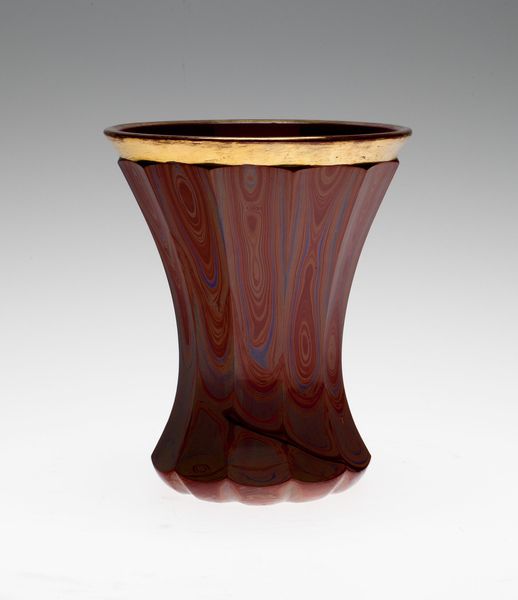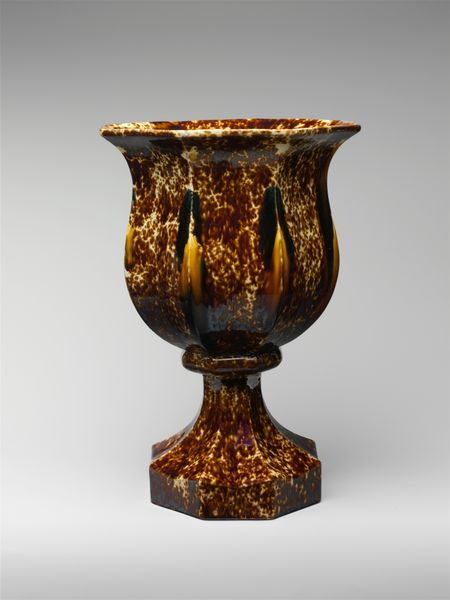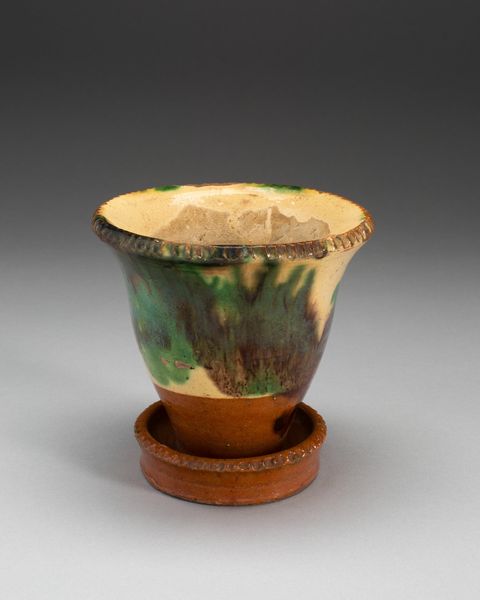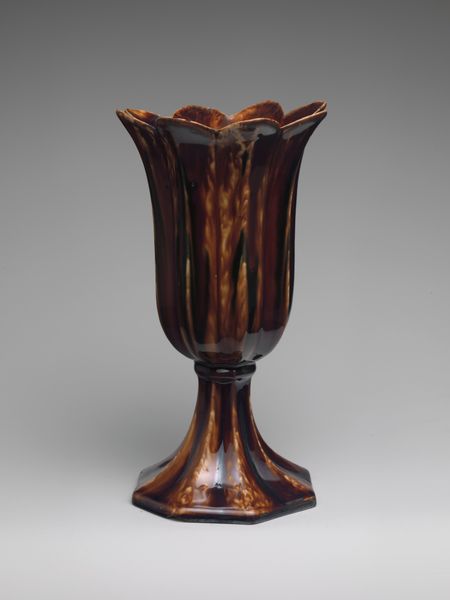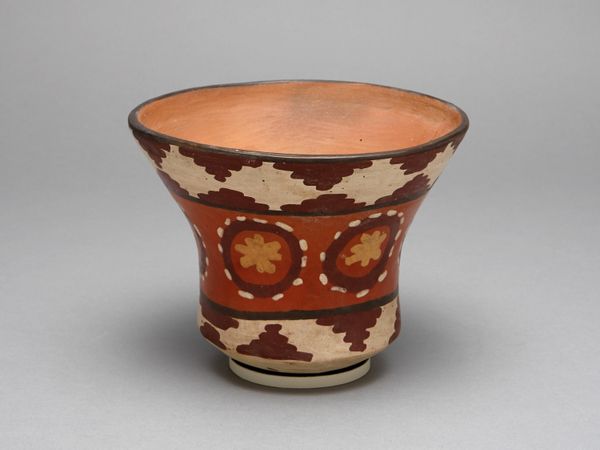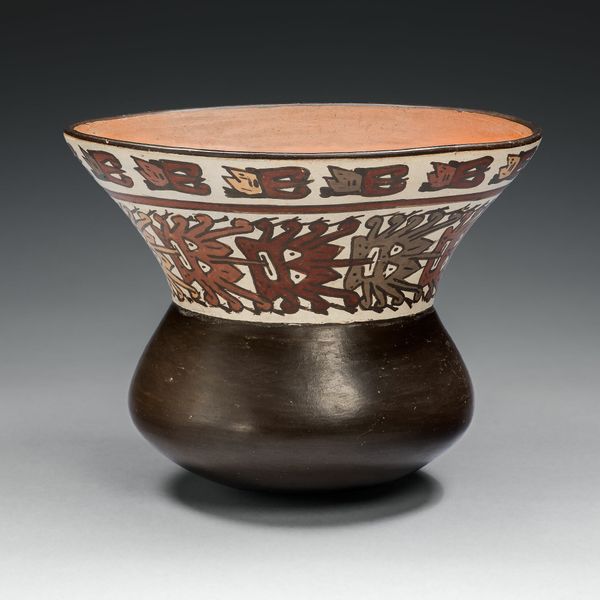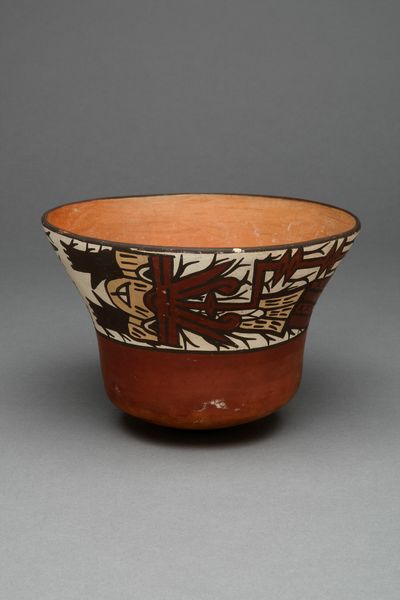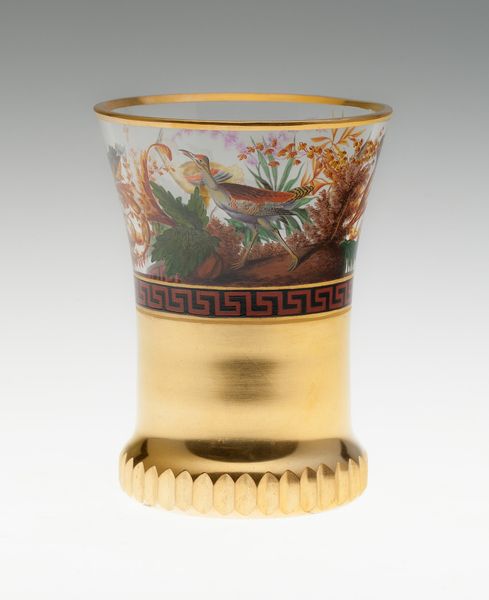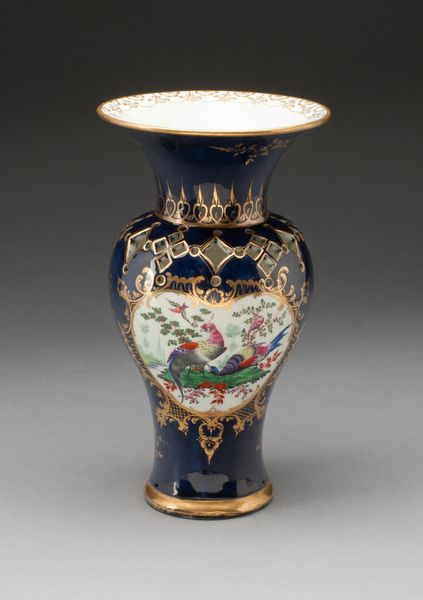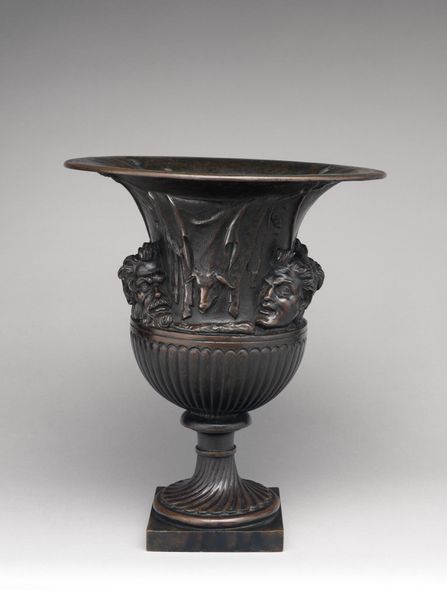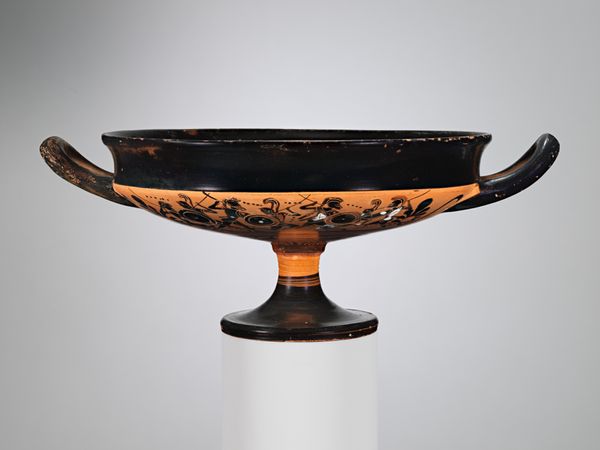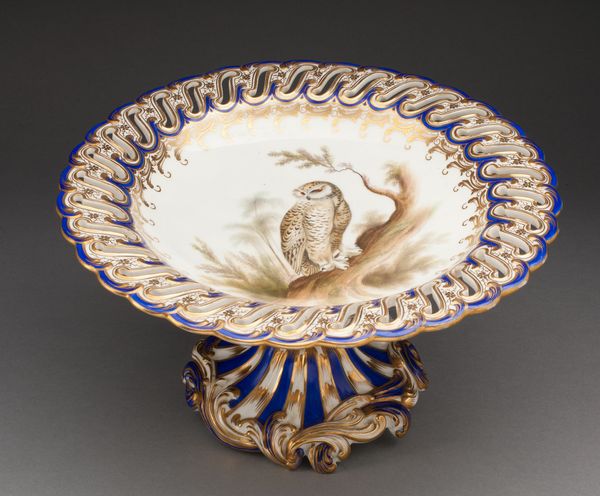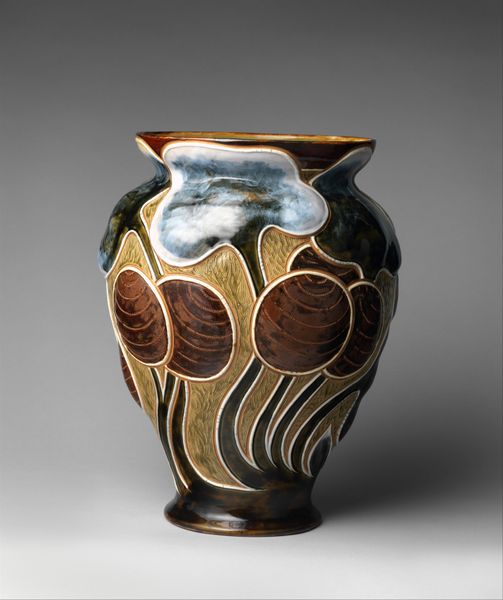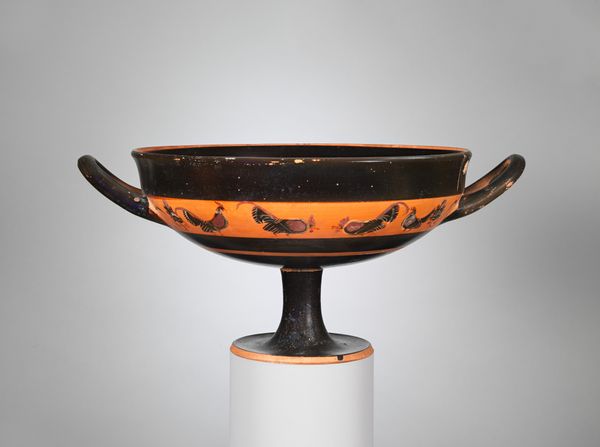
ceramic
#
ceramic
#
vase
#
ceramic
#
decorative-art
Dimensions: 13.3 × 12.1 cm (5 1/4 × 4 3/4 in.)
Copyright: Public Domain
Editor: Here we have a ceramic vase from the Staffordshire Potteries, dating back to around 1810. The swirling patterns and warm color palette give it a vibrant, almost psychedelic feel, despite its age. How do you interpret the social implications behind decorative objects like this vase? Curator: That "psychedelic feel," as you put it, hints at a fascinating story. Staffordshire Potteries emerged during a period of immense social change. Mass production of decorative objects made luxury accessible to a burgeoning middle class, thereby disrupting existing socio-economic power dynamics. But let's consider the labor conditions required for that mass production. Who were the potters? Editor: I hadn’t thought about the social dynamics embedded in a vase. So you're suggesting that something as seemingly innocuous as a decorative object is actually tied up in complex narratives of class, labor, and accessibility? Curator: Precisely. Think of this vase as a material witness to the rise of consumer culture. Who got to participate and at what cost? Moreover, these patterns could also signal global exchange – were the colorants sourced locally, or did they come from colonized lands? Every object whispers histories of power. What stories can we piece together about empire just from looking closely at the materials themselves? Editor: So, this vase is more than just pretty colours. It embodies social questions around colonialism, economy and labor. Thank you for making me think twice before seeing merely "decorative art." Curator: And thank you for bringing fresh eyes to this conversation. Recognizing these interconnected histories transforms how we engage with art.
Comments
No comments
Be the first to comment and join the conversation on the ultimate creative platform.
